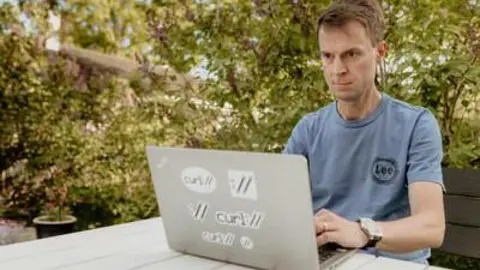The ongoing dialogue surrounding open source software development raises critical questions about the future of the field, namely whether younger developers will step up to maintain and contribute to pivotal projects. Traditionally, open source initiatives have been the backbone of significant technological innovations facilitated by passionate founders. Daniel Stenberg, the creator of ‘curl’, an open source internet transfer tool, reflects on this issue. Since its debut in 1996, curl has amassed billions of downloads and is integral to data transfers on the internet. Stenberg acknowledges the importance of succession planning, expressing that he wants to ensure a smooth transition for whoever takes over his work when the time comes. This sentiment resonates with other founders from the 1990s and early 2000s, who are now contemplating the sustainability of their projects as they age.
The ethos driving the open source movement has always been community-driven, centering around the philosophy that anyone can contribute, modify, and freely distribute software. Figures like Loris Degioanni, who first entered the realm of open source through Wireshark during his master’s program, emphasize the significance of nurturing these projects. Through time, their founders have cultivated thriving communities that rely on continual updates and maintenance. As Degioanni, now CTO of Sysdig and a sponsor of Wireshark, points out, the aging of original developers raises concerns about the future of these essential tools.
A glaring issue for many in the open source community is attracting younger developers to the fold. It appears there might be a deficit of interest among the new generation in actively engaging with or taking over these projects, especially considering that contributions are often unpaid. Linus Torvalds, the famed creator of Linux, openly discussed this concern during the Open Source Summit Europe, noting that kernel maintainers are growing older. Amanda Brock, CEO of OpenUK — which advocates for the UK’s open technology community — adds that younger developers may not appreciate the challenges posed by closed-source software that propelled the open-source revolution.
Additionally, technical barriers pose a hurdle for the younger demographic. Many cornerstone open-source projects were architected using C, a programming language that, while still taught, is not predominant in the commercial sphere today. This reality makes it challenging for newer developers who may gravitate toward languages that are more commercially viable. Nonetheless, alternatives like plug-in architectures, which allow for programming in different languages, offer a potential bridge to engage new contributors. Both Wireshark and Falco, which Degioanni also helped found, utilize such structures, potentially broadening the accessibility for up-and-coming developers.
Despite challenges, a sense of optimism prevails. Degioanni conveys that the core principles of open-source software — modifying and interacting with technology — remain firmly embedded in the industry. He observes an ongoing joy among young developers in engineering software that fuels community engagement. While the enthusiasm surrounding the ideal of open-source may be less pronounced than before, the foundation remains strong, thanks to ongoing contributions and the emergence of new projects.
The idea of maintaining independence versus transitioning control to foundations introduces further complexity to the discussion. For instance, while Stenberg has chosen to keep curl completely independent, other projects have successfully managed to be sustained through organizational oversight, like those under the Cloud Native Computing Foundation. Brock highlights that finding ways to support and motivate young contributors is crucial, emphasizing the professional value that comes with the experience of contributing to open-source initiatives.
As the landscape of software development continues to evolve, fostering interest among younger developers remains essential. Encouraging participation in open source can yield benefits in career development, networking, and sharpening technical aptitude. Ultimately, whether through self-initiated projects or through established foundations, the legacy of open source will depend on harnessing the innovative spirit and enthusiasm of the next generation of developers.



